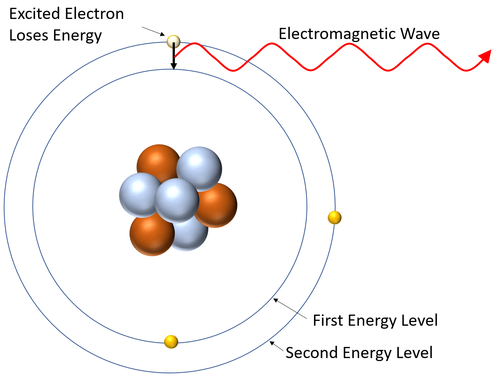Difference between revisions of "Emission Spectra"
| Line 1: | Line 1: | ||
==Key Stage 4== | ==Key Stage 4== | ||
===Meaning=== | ===Meaning=== | ||
| − | [[File:FlameEmissionSpectroscopy.png|right|300px|thumb|The [[Emission Spectra|emission spectra]] | + | [[File:FlameEmissionSpectroscopy.png|right|300px|thumb|The [[Emission Spectra|emission spectra]] of several [[metal]]s.]] |
'''Emission spectra''' are the specific [[wavelength]]s of [[light]] [[emit]]ted by the [[electron]]s in [[atom]]s as they lose [[energy]]. | '''Emission spectra''' are the specific [[wavelength]]s of [[light]] [[emit]]ted by the [[electron]]s in [[atom]]s as they lose [[energy]]. | ||
Revision as of 13:14, 22 February 2019
Key Stage 4
Meaning
Emission spectra are the specific wavelengths of light emitted by the electrons in atoms as they lose energy.
About Emission Spectra
- The spectrum of white light is a continuous change of colours with all wavelengths having the same intensity.
- An emission spectrum is a set of specific wavelengths with a high intensity. This appears as bright lines of colour on a spectrum.
- A emission spectrum is created when excited electrons (electrons in high energy levels) lose energy and fall to a lower energy level emitting a specific wavelength of electromagnetic wave when they do.
| This diagram shows an excited electron losing energy by emitting an electromagnetic wave. As it does this the electron falls back down to a lower energy level. |

